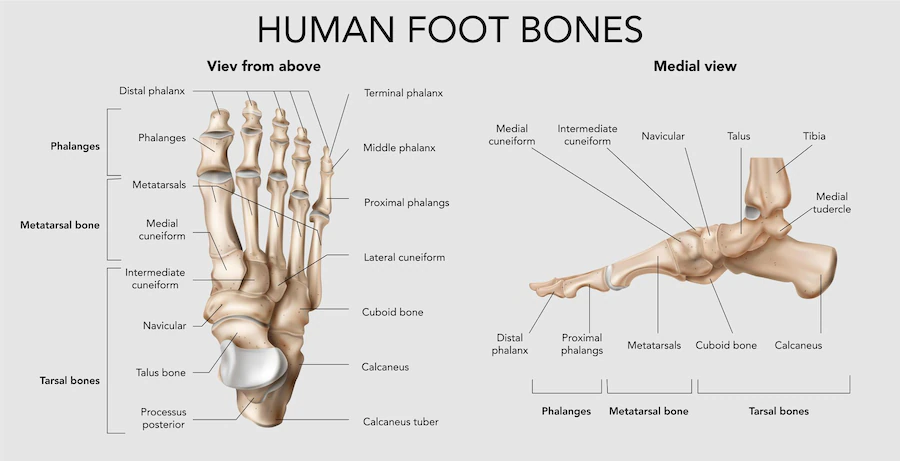It does sometimes happen that two or more of the tarsal bones in the foot fuse together. This condition is rare and known as tarsal coalition. It results in limited mobility and causes pain.

What are the possible treatment options?
Tarsal Coalition Conservative Treatment Options
Doctors always try to start with less-invasive procedures. In this case, physical therapy and wearing orthotic devices are two common suggestions. If there is pain, then NSAIDs may also be needed to manage discomfort.
In the cases when these initial recommendations don’t produce the desired relief, or when the condition has progressed to a point where the pain is unmanageable or severely limits mobility, a more invasive procedure may be suggested.
Tarsal Coalition Invasive Treatment Options
For a podiatrist to propose foot surgery, they would have to assess the severity of the condition and its impact on the patient’s quality of life.
The objective of surgical intervention would be to separate the fused bones so mobility can be improved and pain relieved. Different forms of surgery could be performed, depending on the extent of the fusion as well as its location.
Example surgical options are:
- Arthrodesis: also known as joint fusion. This is a surgery in which the affected bones are fused together giving you stability and assuaging the pain.
- Arthroereisis: this is a procedure in which small implants are inserted into your foot in a bid to separate the fused bones while preserving your mobility.
- Osteotomy: a surgery that involves the cutting and repositioning of the fused tarsal bones to restore correct alignment.
The Bottom Line
To determine the best course of action, a consultation with a podiatrist should be your first priority. Leading foot and ankle specialist, Dr. Lonny Nodelman will consider factors such as the degree of the coalition, the size, and location, and your age alongsideyour lifestyle before making a decision. Get started by booking an appointment today.
Looking for more insight? Check out our previous posts:
Disclaimer:Any information provided in this blog is not intended to replace medical advice given by qualified professionals.

